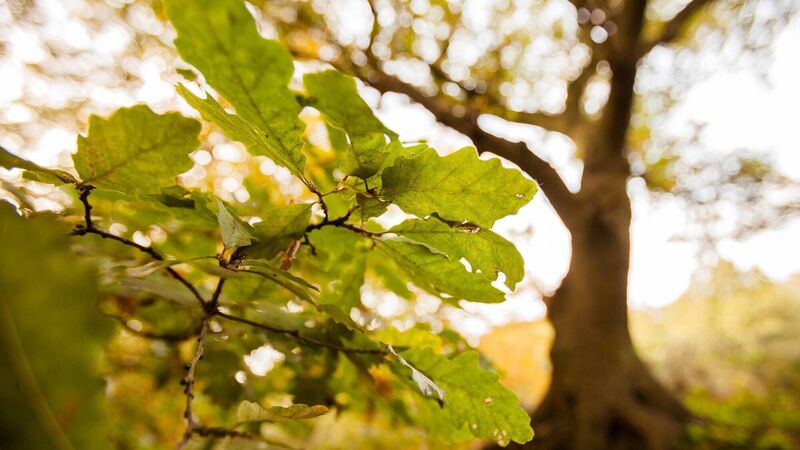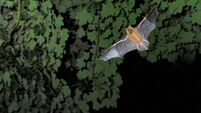Anja Murray: We need more trees to improve Ireland's air quality

Trees, like sessile oak (pictured) dramatically help improve urban air quality.
May is here. Bealtaine, an ancient Irish festival traditionally celebrated on May 1, marks the crossing over to the bright half of the year. It’s a time to breathe deep, inhale the freshness of unfurling leafy canopies on trees. This is the point where we transition to more outdoor activities as the summer begins.
At this time of year, trees are in the process of growing a whole new canopy of green leaves. Each leaf uses energy directly from the sun to divide molecules of carbon dioxide and water, before recombining the atoms as carbohydrates and oxygen. The carbohydrates are used by the tree to grow new twigs, bigger branches, stronger roots and more leaves. The food that trees make is passed up through the food chain, for example by the caterpillars who feed on the leaves and in turn provide essential protein-rich food for nesting birds.
The oxygen that trees produce each day is released in to the air all round, giving us and all the other animals the oxygen we need to breathe. This process is basic, familiar to each of us, yet is something we tend to overlook. A mature leafy tree can produce enough oxygen for 10 people to inhale in a year. In addition, trees can filter pollutants out of the air. Yet trees are not seen as allies when it comes to air quality.
In Ireland, our air quality is surprisingly poor for what is often perceived as a relatively unpolluted country. As a country, it is surprising to discover that Ireland's air pollution levels exceed the levels that the World Health Organisation (WHO) considers safe. Each year, there are over 1,300 premature deaths in Ireland caused by poor air quality, specifically, because of fine particles in our air. The main sources of this particulate matter are the same as Ireland’s main sources of carbon emissions: transport, home heating and intensive agriculture.
Improving air quality in towns and cities requires that we reduce the use of heavily polluting vehicles, especially where traffic fumes are high. There have been calls for congestion charges, a measure shown to significantly improve air quality where implemented. Cycling infrastructure and improving walkability will also be necessary if we wish to be able to breathe clean air in our towns and cities. But alongside the obvious need to drastically reduce vehicular traffic, we also need an ambitious programme of tree planting in all our towns and cities. I have written in this column before about the many benefits of trees in urban areas, which bring colour, texture, dappled light, birdsong and other health benefits.
Cars and trucks produce noxious pollutants called ‘fine particulate matter’, tiny particles which come from diesel exhaust, brake dust, and rubber tire particles. Fine particulate matter accumulates on our lung tissues, enters our blood, and creates major risks for lung disease, heart disease, strokes, asthma, and cystic fibrosis. Recent research carried out in Dublin has shown that during rush hour, trees significantly reduce these highly hazardous substances in the air by filtering out the fine particles. Leaves provide surface area for the deposition of these fine particles. Trees literally take the hit for us, and dramatically improve air quality in city streets. The air on city streets with car traffic and trees has less than half the concentration of fine particulate matter as city streets with the same volume of traffic and no trees.
Now that we know just how dramatically trees help improve urban air quality, it adds to the impetus for health and community advocates, city planners and politicians to press for the preservation of street trees and bring about far more planting of street trees in urban areas.
This is of course on top of measures to reduce vehicular traffic and emissions in the first place.
But poor air quality is not just an urban problem. Another source of deadly ‘fine particulate matter’ is ammonia gas, a substance that can be highly toxic when we inhale it, and can trigger serious respiratory problems in children and adults. 99% of Ireland’s ammonia emissions arise from the storage and application of animal manure, nitrogen fertilisers, and the breakdown of nitrogen compounds in soils. In addition to being toxic to humans, ammonia is damaging to many wild habitats, killing off lichens and mosses that are often sensitive to air pollution and causing severe damage to wild habitats and their plants and animals. Ammonia is also a greenhouse gas, contributing to climate change.
In the past eight years, ammonia emissions have been increasing in Ireland, driven by the significant increases in dairy cow numbers and nitrogen fertiliser use. Pig slurry is also a significant source of ammonia.
In terms of air quality, the main challenge is to transition away from activities that we know pollute the air we breathe. We must reduce fine particle air pollution at source. Alongside these actions, we can benefit enormously from the air-filtering effect of trees, especially broadleaf trees, in both urban and rural environments. At risk of stating the obvious, again, trees not only reduce polluting emissions, they also produce oxygen, soak up carbon dioxide, enrich the visual landscape and improve our mental health when we are around them. In the case of native trees, they provide crucial habitat for biodiversity.
Ireland’s ‘Clean Air Strategy’ is a crucial plan to address these challenges and ensure each of us, now and in the future, can breathe clean unpolluted air. 1,300 avoidable premature deaths each year from air pollution is unacceptable. Yet the draft strategy is being widely criticized for lacking the kind of transformative actions that are needed to bring these figures down.
Bealtaine is a time for intention setting. A time to unfurl from the dormancy of winter and enjoy the outdoors as the beauty and bounty of nature. It’s a good time to look up through a fresh green leafy canopy and breathe deeply.
- Anja Murray is an ecologist, broadcaster, regular presenter on ‘Eco Eye’ on RTÉ 1 and writes weekly ‘Nature File’ on RTÉ Lyric FM.










